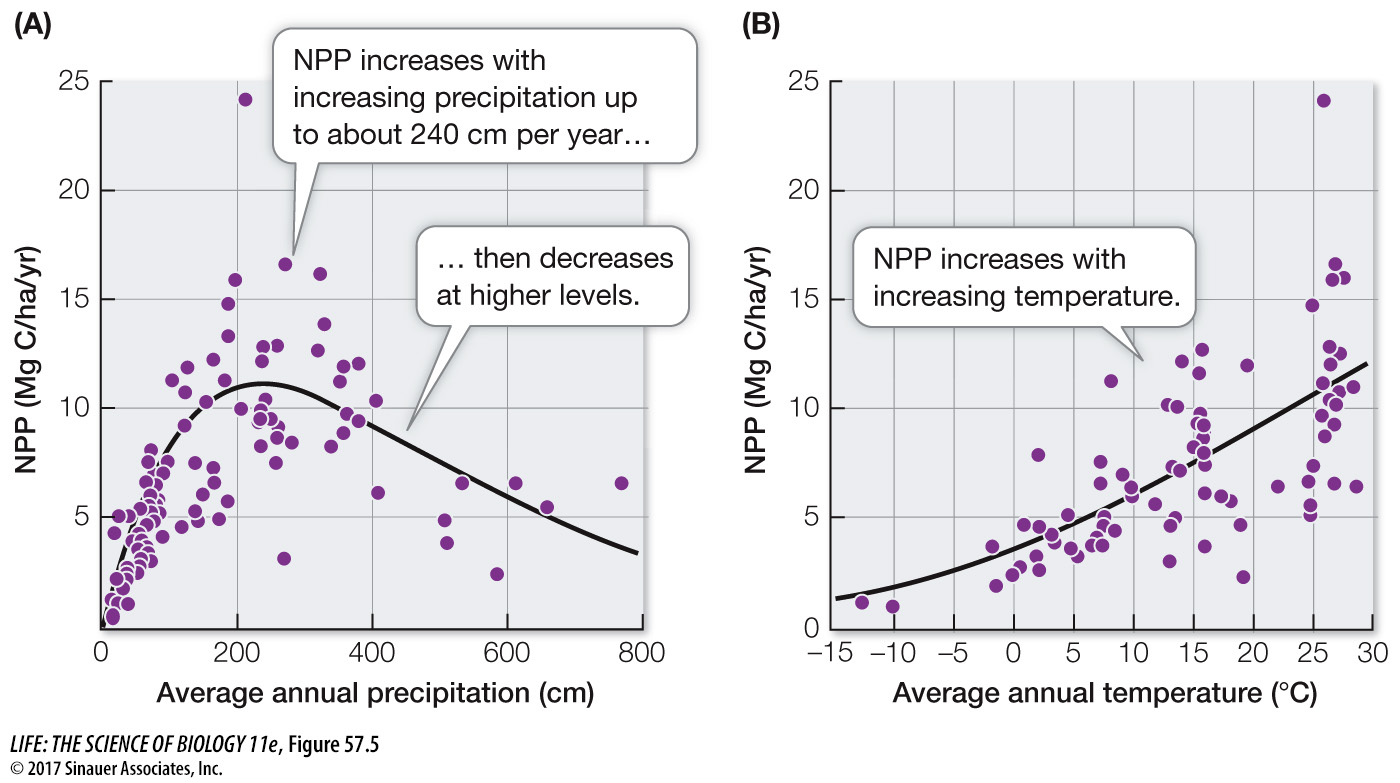Rainfall and temperature largely control terrestrial primary production
The strong latitudinal patterns in terrestrial NPP reflect variation in global climate, particularly rainfall and temperature, across latitudes and seasons. NPP increases as average annual rainfall increases up to a maximum (approximately 240 cm per year), but then declines in most ecosystems (Figure 57.5A). The decrease in NPP with high rainfall can occur because of sunlight being reduced by cloud cover over long periods of time or as a consequence of nutrient loss or flooding. NPP also increases with average annual temperature (Figure 57.5B). Thus it makes sense that close to the equator, where temperatures and rainfall are high throughout the year, conditions are ideal for primary producers. In deserts, even though temperatures can be high, plant growth is limited by a lack of rainfall. At higher latitudes or elevations, even though moisture is generally available, NPP is low because it is relatively cold much of the year and the growing season is shorter than at lower latitudes or elevations.

In addition to being affected by global climate, terrestrial NPP is also affected by nutrient availability and atmospheric CO2 concentrations. How these two factors affect primary production is of special interest given the increasing use of artificial fertilizers and rising atmospheric CO2 concentrations from the burning of fossil fuels (see Key Concept 57.4). A looming question is whether plants, by taking up CO2, might be able to offset increasing CO2 emissions. An ambitious experiment exploring this possibility was conducted in 1996. The FACE (free-

The FACE experiments remind us that terrestrial ecosystems can vary widely in their NPP, as you saw in Figure 57.4. Clearly some of this variability is a simple consequence of global and regional climate promoting the formation of certain types of ecosystems and biomes, as is illustrated by Walter climate diagrams. But the types of plant species present can also determine the NPP of an ecosystem. For a given set of environmental conditions, plant species can vary widely in their NPP depending on their photosynthetic pathway (e.g., *C3 versus C4 plants, or trees versus shrubs versus grasses), which regulates their rate of photosynthesis. Moreover, nutrient limitation can play a major role in NPP in certain ecosystems. For example, in lowland tropical forests, NPP is often limited by phosphorus, calcium, and potassium. In temperate and arctic ecosystems, nitrogen and phosphorus can be limiting.
*connect the concepts As discussed in Key Concept 10.4, C3 and C4 plants differ in how they fix CO2 and can be distinguished according to whether the first product of CO2 fixation is a three-